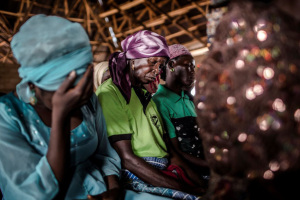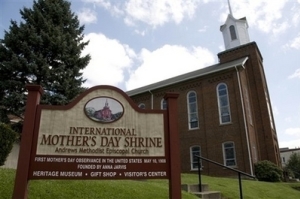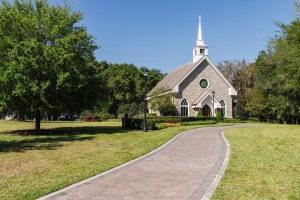St. Patrick's Day: The Legacy of Church Planting and Scholars
In keeping with the heritage passed down through my grandmother, Belle O'Brien, and her daughter, my mother, who airbrushed me to sleep with the gentle tones of Celtic lullaby, and all the Hanleys and O'Hanley's of County Roscommon, and the McGaheys of the Northern Counties, I must pause to speak of things Irish.
Foremost is Saint Patrick, whose life and contributions we celebrate on March 17. His death about 460 A.D. still leaves the world diminished, to paraphrase John Donne.
At 16, pirates kidnapped young Patrick from his home village in what is now Scotland. They sold him into slavery in (now) County Antrim, Northern Ireland. "I was taken captive before I knew what I should desire and what I should shun," Patrick later wrote. The misery of his bondage thrust Patrick back to the spiritual roots established in him as a child by his family.
"Like a stone lying in deep mire" God "raised me up and, indeed lifted me high up," Patrick wrote, of his conversion to Christ. As Patrick prayed one evening, a voice came out of the darkness: "Soon you will go to your own country. See, your ship is ready." After six years as slave to a chieftain, Patrick escaped, trekked 200 miles, and found the "ship" that was "ready," and which took him home to Britain.
There God prepared Patrick for his life's grand mission – to take the Gospel to Ireland. About 405 A.D., Patrick returned to the land where he had suffered. At the end of his life, the country was so full of the Gospel it sent missionaries back to Scotland, as well as the European Continent. "Those who never had a knowledge of God but worshipped idols and things impure, have now become a people of the Lord, sons of God," he wrote.
Patrick established at least 365 churches, ordaining elders in the New Testament style of Timothy and Titus. Many of these leaders came together to be trained in Scripture, evangelism, and missions to their own people and others. Monasteries arose from these learning communities to the extent that Ireland was noted as the "Isle of Saints and Scholars."
In fact, it was these spiritual offspring of Patrick who "saved civilization." Thomas Cahill, a contemporary author, highlights this in his book, How the Irish Saved Civilization. Cahill notes that Ireland had no urban areas in the period of the rise of the monasteries. The "monastic establishments grew rapidly into the first population centers, hubs of unprecedented prosperity, art, and learning," Cahill writes.
As "the Roman lands went from peace to chaos, the land of Ireland was rushing even more rapidly from chaos to peace," says Cahill.
The Visigoths and other barbarians who swept Europe after the collapse of Rome, as well as the Vikings and their mindless brutality in later times, "burned the libraries and the books turned to dust" and "the stones remaining were reassembled into rural outhouses." Had the ravaging been total, "we would have lost the taste and smell of a whole civilization," says Cahill.
That destruction would have included the ancient classics and Judeo-Christian worldview that nurtured the best of the West's mind and soul.
Because the Irish monks and missionaries who were Patrick's spiritual heirs were scholars as well as saints, they committed themselves to the preservation of ancient classics and the spread of their ideas. Irish copyists labored at maintaining the purity and accuracy of the treasured manuscripts. The monasteries became university cities, where, in the words of ancient English historian the Venerable Bede, even non-Irish commoners were "willingly received" and supplied "with food day by day without cost, and books for the studies, and teaching free of charge."
Irish centers of learning sprang up in the pagan reaches of post-Roman Europe as later generations of Irish missionaries, saints-scholars all, spread outward from Ireland. They were driven by a God-centered consensus and vision for Christ and His Kingdom. That consensus and vision had energized Patrick, and he had voiced it in his prayer known today as "Saint Patrick's Breastplate," part of which says:
Christ with me, Christ before me, Christ behind me,
Christ in me, Christ beneath me, Christ above me,
Christ on my right, Christ on my left,
Christ when I lie down, Christ when I sit down, Christ when I arise…
There's a poignant relevancy today regarding Patrick and his legacy. In the Western civilization that benefited greatly from his own work and that of his followers, the God-centered consensus and vision for Christ and His Kingdom has been lost. Hordes of theological, philosophical, and sociological armies have assaulted the ancient foundations of nations that arose as the freest, most prosperous in history in the wake of Patrick and his followers.
Cahill believes that without the Irish monks and their passion for preservation, "there would have perished in the west not only literacy but all the habits of mind that encourage thought. And when Islam began its medieval expansion, it would have encountered scant resistance to its plans – just scattered tribes of animists, ready for a new identity."
The raiders have come to civilization once again, not just in the form of Islamicists, but in all who seek to destroy the heritage that gave the world unprecedented freedom and prosperity, human dignity and compassion. Important facets of Western Christianity have lost their taste both for saintly living and scholarship. They can give only "scant resistance" to those who would destroy the civilization that gave them freedom to exist and grow.
This new era in the West spurs the need for people once more to put on "Saint Patrick's Breastplate," and to pray that a new generation of "saints and scholars" will rise up to "save civilization."




























